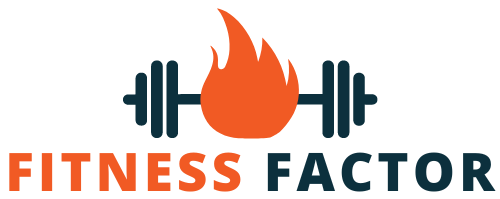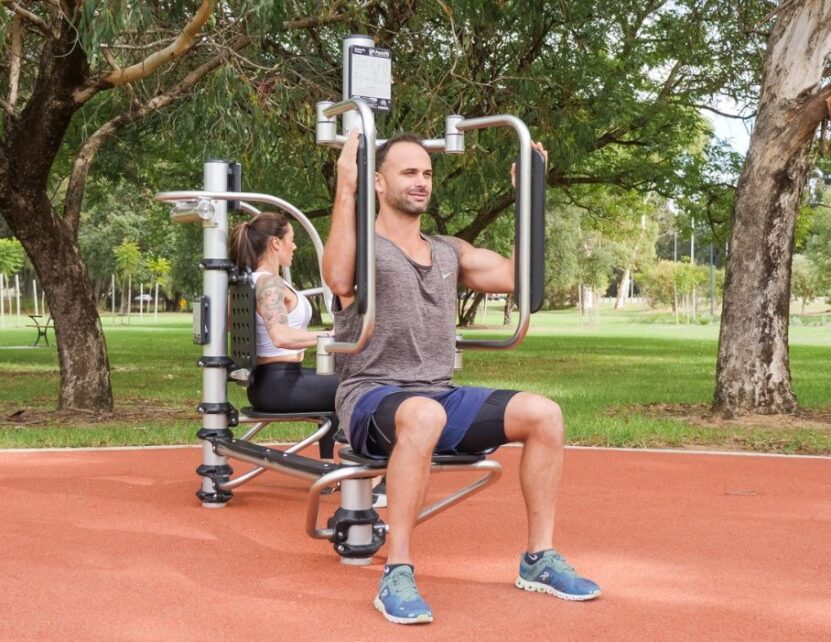Fitness should be for everyone. Yet, too many outdoor spaces exclude people with disabilities, seniors, or those recovering from injuries. A well-planned space considers different needs, abilities, and preferences. No one should feel left out of their community’s fitness opportunities.
Key Points:
- Accessibility features help create a space where everyone can move comfortably and safely.
- Rubber tiles provide essential shock absorption and reduce injury risks in high-use areas.
- Adaptive equipment and varied workout zones ensure diverse exercises for all fitness levels.
- Thoughtful signage and color contrast assist users with visual impairments.
- Budget-friendly solutions exist for communities with limited funding.
- Community involvement ensures the space meets real needs.
- Multi-use zones maximize the area for group training and individual workouts.
Start with the Right Surface: Why Rubber Tiles Matter
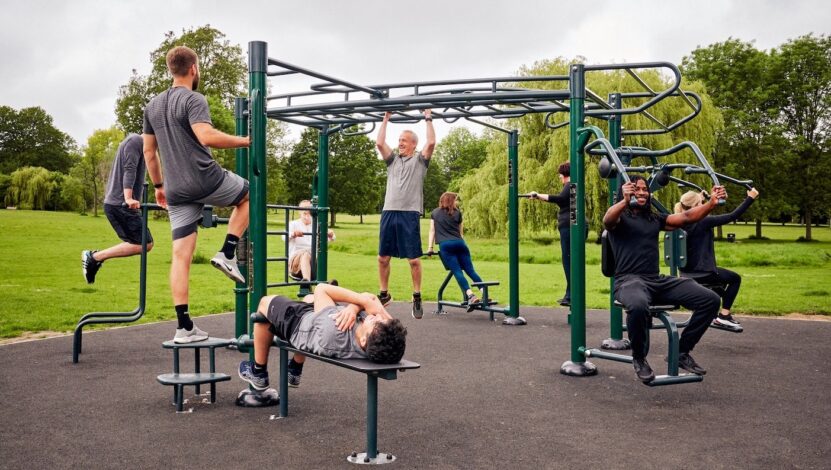
A good foundation determines safety, comfort, and usability. Hard concrete can be brutal on joints, and grass surfaces wear out fast. Installing rubber tiles provides excellent shock absorption, making workouts safer. Whether users engage in strength training, stretching, or light cardio, a well-padded surface ensures impact protection and reduces long-term joint stress.
- Helps prevent slips, especially in wet conditions, reducing risks for those with mobility challenges.
- Reduces impact on knees and ankles, making it ideal for older adults and those recovering from injuries.
- Works well for wheelchair users who need a firm, stable surface that prevents wheels from sinking.
- Low maintenance and withstands heavy foot traffic, making it cost-effective for long-term use.
Adaptive Equipment: More Than Just a Few Pull-Up Bars
Many parks throw in a set of parallel bars and call it a day. That does not work for people with disabilities, seniors, or beginners. Instead, a variety of equipment allows users to tailor their workouts to their abilities, whether that means seated options, low-resistance machines, or grip-friendly bars.
Resistance bands or low-resistance pulley systems help with gradual strength-building and rehabilitation. Seated row machines with wide seats and easy-grip handles cater to those who need extra support. Hand cycles ensure a full-body workout without requiring leg mobility. Elevated push-up bars assist those with limited mobility while still offering a challenge.
Pathways and Navigation: Movement Should Be Easy
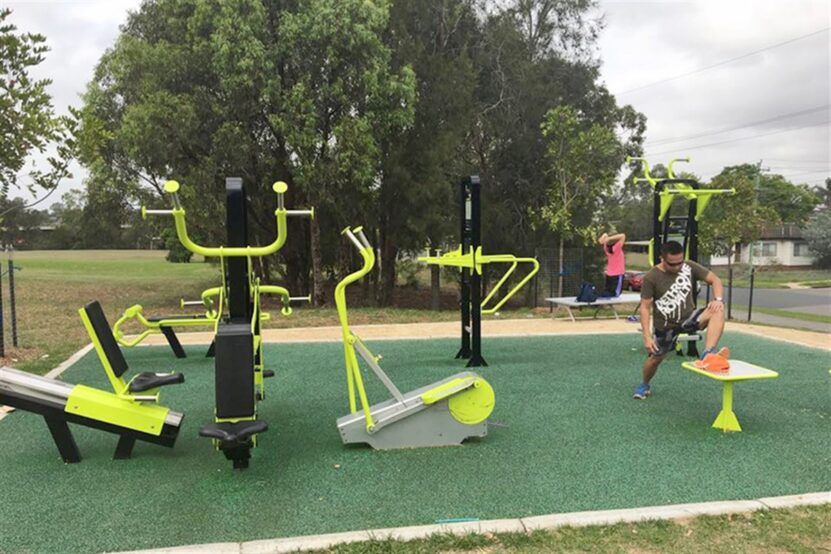
A fitness space is useless if getting to the equipment feels like an obstacle course. Many designs overlook basic accessibility features, making it frustrating or even impossible for some users to navigate.
Wide pathways allow wheelchair users to move freely, reducing congestion and preventing bottlenecks. Ramps instead of steps create smoother access, ensuring no one gets stuck due to elevation changes. Textured paths help those with visual impairments stay on track, providing a clear, tactile guide. Benches placed strategically offer much-needed resting points. Trash bins and water fountains should always be within reach for seated users, reinforcing independence and ease of use.
A Balance Between Challenge and Support
An outdoor fitness space should challenge users while still offering modifications for those who need them. People should feel motivated, not discouraged, by the equipment and design choices.
For strength training, adjustable resistance stations allow for progressive overload, benefiting both beginners and advanced users. Cardio equipment like elliptical squeak and trainers or rowing machines with adjustable speeds ensures everyone can find an intensity level that works for them.
For those with mobility impairments, specialized hand cycles, parallel bars with varying heights, and accessible stretching zones help diversify options without excluding anyone.
Shade and Seating: Comfort Supports Consistency
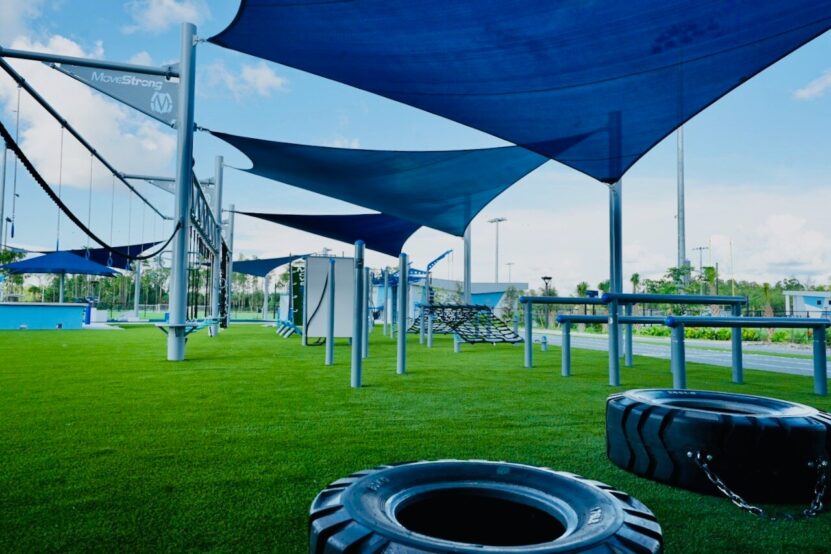
Extreme sun exposure discourages long workouts. Having shaded areas ensures everyone stays comfortable. Without it, users may avoid exercise entirely during hot months, limiting the space’s effectiveness.
- Pergolas or shade sails create coverage over high-use zones like stretching areas or cardio equipment.
- Benches near workout stations allow for quick rests, making the space more inviting for seniors and those with limited endurance.
- Water stations equipped with easy-to-press dispensers encourage hydration without needing excessive grip strength.
- Strategically placed trees contribute to natural cooling while adding aesthetic appeal.
Inclusive Signage: More Than Just Words
Signage plays a crucial role in making a space welcoming and functional. Instructions should be easy to read, intuitive, and available in multiple formats.
Large text ensures readability, even for those with visual impairments. Braille and raised diagrams offer guidance for blind users, enhancing accessibility.
QR codes linking to instructional videos allow users to learn proper exercise techniques with ease. Signs should be placed at multiple heights so both seated and standing users can comfortably access the information.
Community Engagement: Designing for Real Needs
Assuming what people need leads to poorly used spaces. Talking to the community ensures better results. Public input leads to a design that reflects actual user needs rather than assumptions.
- Hosting open discussions with residents helps determine what features will get the most use.
- Collaborating with disability advocacy groups ensures adaptive features are practical, not just symbolic.
- Encouraging feedback through surveys or on-site suggestion boxes allows ongoing improvements.
- Adjusting equipment placement based on real-world use prevents common accessibility mistakes.
Lighting and Security: Keeping the Space Functional at All Hours
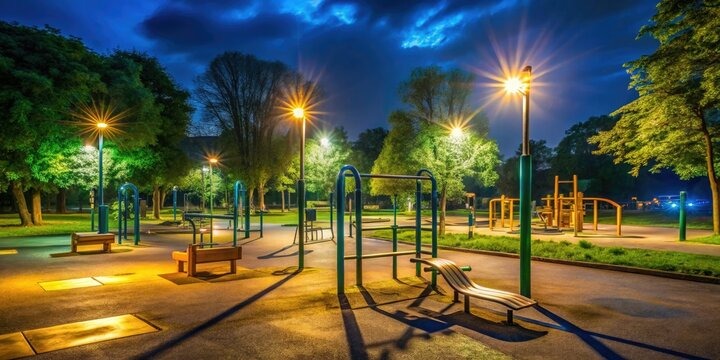
A well-lit outdoor gym extends usability beyond daylight hours, making fitness more accessible to those with unpredictable schedules.
Poor lighting creates safety hazards, discouraging use and leading to underutilized spaces.
LED lighting with motion sensors improves visibility while conserving energy. Pathway lights guide users safely to equipment without causing harsh glare.
Security cameras add an extra layer of protection, deterring vandalism and ensuring safer workouts. Clear emergency call buttons positioned around the space provide reassurance for those exercising alone.
Budget-Friendly Solutions Without Sacrificing Quality
Not every project has unlimited funding, but good design does not have to be expensive. Even small modifications can dramatically improve accessibility and user experience.
- Repurposed materials can create durable, cost-effective seating or shade structures.
- Community-led crowdfunding can help secure high-cost items, making expensive equipment more feasible.
- Partnerships with local businesses can provide sponsorships in exchange for branding opportunities.
- Phased installations allow gradual expansions instead of requiring a massive upfront investment.
Multi-Use Zones: Maximizing Space for Everyone
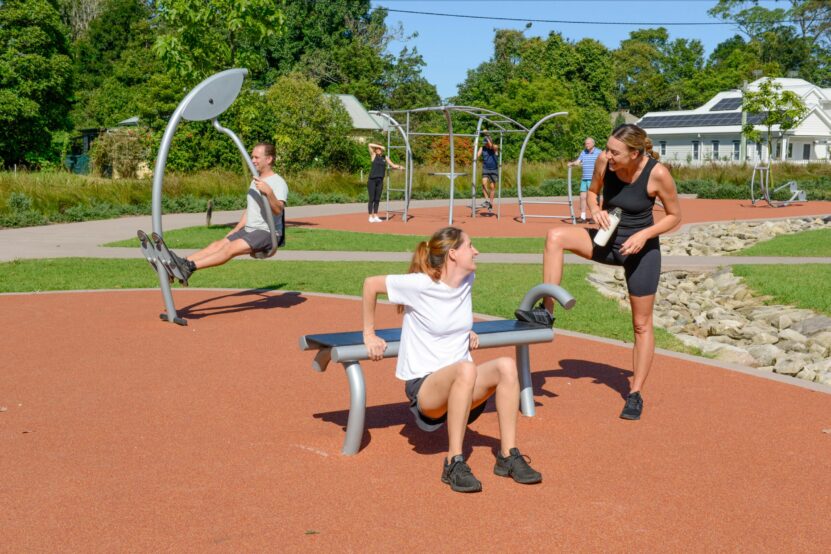
A great fitness space accommodates a variety of activities, ensuring no one feels excluded. Combining workout stations with open areas allows different types of fitness activities in one space.
A dedicated stretching zone ensures users can warm up and cool down properly. Open mats cater to yoga sessions, bodyweight exercises, or physical therapy movements.
Group training zones allow community-led boot camps and fitness classes. Individual stations provide privacy for those preferring solo workouts. Sports-friendly layouts make it easy to incorporate activities like seated volleyball or adaptive basketball.
Conclusion
An outdoor fitness space should not feel exclusive. A well-thought-out design removes barriers, encourages participation, and brings communities together. The right flooring, adaptive equipment, clear pathways, shaded areas, and community involvement all make a difference. Smart planning and thoughtful execution ensure that fitness is accessible to all, regardless of ability or mobility. Inclusivity does not require an unlimited budget—just the right approach.
